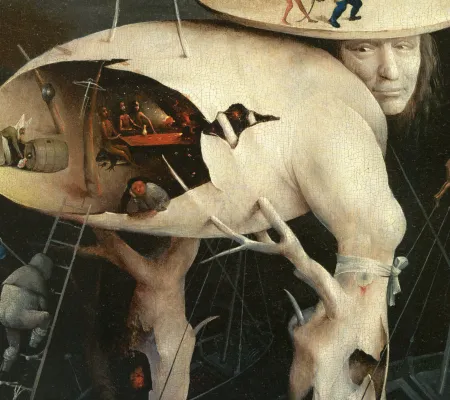Bosch's paintings are among the best- known and most influential images of Hell in the history of art. Yet few have noticed an unexpected and unique motif that Bosch repeatedly includes amidst the demons, sinners and burning buildings of Hell: the ladder. This motif carries associations with war, sexuality and executions that could make it an appropriate object for inclusion in Hell. But in the spiritual literature and art of Bosch's day, the ladder was primarily associated with the concept of spiritual ascent, which explains why other artists never depicted ladders in Hell. The fact that Bosch did so demonstrates how Bosch exploited ambiguity of meaning as a part of his overall strategy of picture-making -- and as a way of making his Hells even more hellish.
Lynn F. Jacobs is the author of three books — Early Netherlandish Carved Altarpieces, 1380-1550:Medieval Tastes and Mass Marketing (Cambridge University Press, 1998), Opening Doors: The Early Netherlandish Triptych Reinterpreted (Penn State Press, 2012) and Thresholds and Boundaries: Liminality in Netherlandish Art (1385-1530) (Routledge, 2018). Her articles on Early Modern painting, sculpture and manuscript illumination in Northern Europe have appeared in journals such as Art Bulletin, Zeitschrift für Kunstgeschichte and The Sixteenth Century Journal. Jacobs has been awarded two fellowships from the National Endowment for the Humanities and a DAAD grant. Her article, “The Marketing and Standardization of South Netherlandish Carved Altarpieces: Limits on the Role of the Patron,” was the recipient of the Art Bulletin’s Arthur Kingsley Porter Prize. Currently she is working on a book entitled German Painted Triptychs of the Fifteenth Century: Blurring the Boundaries, which is scheduled for publication in 2022.


